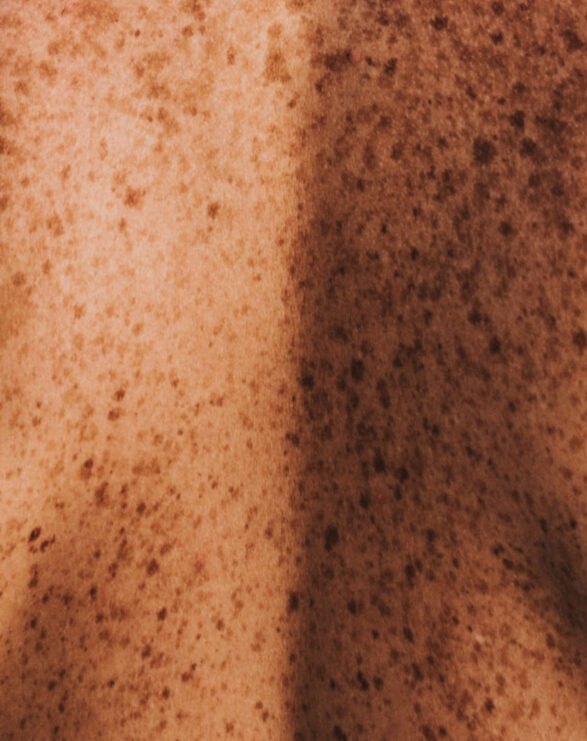Arterial Ischaemic Stroke (AIS)
About AIS
A stroke occurs when a clot in a major vessel blocks the flow of blood and oxygen to the brain, causing death of brain tissue if untreated. Stroke is often characterised by a patient’s sudden impairment of consciousness, inability to move one side of the body and limitation in speech. The centre of the brain injury is called the ischaemic core (dead brain tissue), and the larger surrounding brain injury is known as the penumbra (meaning shadow around the core). The ischaemic core is dead brain tissue which is unsalvageable, but the penumbra is ischaemic tissue (deprived of oxygen) which can potentially be recovered if the patient is treated quickly.
Current standard therapy relies on early intervention following stroke onset to restore blood flow to the brain by either chemically dissolving or physically removing the clot. Intravenous thrombolytic therapy (IVT) in the form of recombinant tissue plasminogen activator (alteplase or tenecteplase; rt-PA) can be administered within four and a half hours, aiming to dissolve the clot within the brain artery. This therapy is usually combined with endovascular thrombectomy (EVT) which aims to mechanically remove the clot and is ideally performed within 24 hours of the stroke. Brain imaging, using a computed tomography (CT) scan and/or magnetic resonance imaging (MRI) scan, is performed upon hospital admission for patients displaying symptoms of stroke. Physicians assess the loss of neurological functions using the modified Rankin Scale (mRS), which scores severity of disability. The location of the brain clot determines whether a stroke patient is eligible for IVT and EVT treatment, as well as having an impact on overall patient prognosis.
Globally, 15m patients suffer from a stroke annually, and over five and half million do not survive. Around 40% of AIS patients do not survive the first year, with most patients who do survive experience permanent life-long disability and further impairment of function over time due to brain tissue damage. As many as 50% of stroke survivors suffer disability and strokes are one of the most frequent causes of dementia. A quarter of stroke patients will experience another stroke within five years, with 12% of AIS patients being readmitted to hospital within 30 days of discharge.
Most patients require ongoing care and face limitations in their daily social activity, as well as significant rehabilitation costs and loss of earnings. Families often have to shoulder excessive rehabilitation costs and lost income. In the United States alone, recent estimates place the cost of stroke in excess of $34bn per year.
Clinical & regulatory progress
November 2024
CLINUVEL announced that its stroke program will be temporarily suspended. More details are in the announcement here.
March 2023
CLINUVEL announced that it has started its second stroke trial (CUV803) with the first patient receiving PRÉNUMBRA® Instant (afamelanotide), a new formulation. Read the announcement.
A Technical Note is available to provide further detail on the current standards of care in stroke, the potential of melanocortins to treat stroke patients, and the aims of CLINUVEL’s stroke program. Read it here.
July 2022
CLINUVEL announced that it intends to evaluate its drug candidate PRÉNUMBRA® Instant (afamelanotide) as a treatment for patients diagnosed with AIS in its next clinical trial (CUV803). AIS is the first clinical target for CLINUVEL’s flexible PRÉNUMBRA® formulations. Read the announcement.
May 2022
Positive final results of the open label pilot study (CUV801) in AIS was released. Afamelanotide was shown to be well tolerated, with five of the six patients showing considerable clinical and functional recovery up to 42 days after treatment. Read the announcement.
March 2022
CLINUVEL announced positive preliminary results from its pilot study (CUV801) in arterial ischaemic stroke (AIS), evaluating afamelanotide in six adult AIS patients. Read the announcement.
January 2022
CLINUVEL announced the completion of enrolment in the CUV801 study. Read the announcement here and watch our Head of Clinical Operation, Dr Pilar Bilbao discussing progress in the program here.
August 2021
Update released on the first three patients treated in the CUV801 study. Read the announcement.
June 2021
First patient treated in the CUV801 study. Read the announcement.
October 2020
CLINUVEL announced that it would commence a pilot Phase IIa study (CUV801) to evaluate SCENESSE® (afamelanotide 16mg) in patients suffering from AIS who are ineligible to receive standard therapy (IVT/EVT), and in stroke affecting the M2 segment or higher, where there is a great unmet medical need. Read the announcement.
References
World Stroke Organization (2020). Learn about stroke. Available online.
de Sousa et. al. (2019). Access to and delivery of acute ischaemic stroke treatments: A survey of national scientific societies and stroke experts in 44 European countries. Eur Stoke J. 4(1):13-28.
Rai et. al., (2017). A population-based incidence of acute large vessel occlusions and thrombectomy eligible patients indicates significant potential for growth of endovascular stroke therapy in the USA. J Neurointerv Surg. 9(8):722-726.
Zerna et. al., (2018). Current practice and future directions in the diagnosis and acute treatment of ischaemic stroke. Lancet. 392(10154):1247-1256.
Benjamin, et. al. (2017). Heart disease and stroke statistics-2017 update: a report from the American Heart Association. Circulation. 135(10):e146–e603.
Communiqués
Scientific Communiqué VII
The human brain is the control centre of the body and without it we could not survive.
VIEW PDFScientific Communiqué V
Following a series of Scientific Communiqués focused on the role of melanocortin signalling in melanogenesis, photoprotection and skin cancer, Scientific Communiqué V takes a closer look at melanocortins and their role in the regulation of the vascular system.
VIEW PDFUnderstanding the Brain:
The brain is one of the most complicated and energy intensive organs in the human body and requires constant nourishment. It demands an extremely large and continuous flow of oxygen and nutrients —approximately 25% of our daily cardiac output. Two pairs of large arteries are responsible for ensuring blood flow to the brain (also known as cerebral blood flow or CBF): the internal carotid arteries, and the vertebral arteries. A lack of oxygen or glucose in the brain can have catastrophic consequences.
The internal carotid arteries carry blood from the heart along the front of the neck to the anterior (front portion) of the brain, branching off to form the middle cerebral arteries (MCAs) and supplying 80% of our total CBF. The vertebral arteries, on the other hand, carry blood from the heart along the back of the neck, uniting to form the basilar artery and supply blood to the posterior (back) portion of the brain.
A loss of blood flow to the brain for more than about 10 seconds can cause a loss of consciousness; serious brain injury can occur within as little as four minutes following loss of blood flow. Ensuring blood flow to the brain is therefore vital to our health.
The brain consists of three main parts: the cerebrum, brainstem, and cerebellum, with each section consisting of a number of smaller sections essential to our survival. These regions span the entire area of the brain and require constant blood supply. This delicate balance is maintained through a network of different arteries, which span across the brain like the branches of a tree, providing a continuous supply of oxygen and glucose.
Once blood reaches the brain via the two main artery pairs, blood flow branches off into a network of smaller arteries, arterioles and finally, capillaries. Some of these branches are joined together, forming the circle of Willis, while others divide further and feed the further (distal) portions of the brain via three main pathways:
- anterior cerebral arteries (ACAs) – responsible for supplying the front of the brain.
- middle cerebral arteries (MCAs) – responsible for the middle of the brain.
- posterior cerebral arteries (PCAs) – responsible for the back of the brain.
The blood-brain barrier regulates the transmission of nutrients between the blood vessels and ensures the brain receives the correct nutrients.
The blood-brain barrier (BBB) consists of various components, but the barrier function comes mainly from the cells that comprise the capillary walls of the BBB, known as the endothelial cells. Each of these cells are closely packed and sealed together to prevent any unwanted leakage to and from the blood.
When trauma occurs the tightly packed endothelium become loose, and the BBB becomes more permeable. This enables toxic blood products (such as haem), as well as other substances (such as drugs) to cross the BBB and cause damage.
The BBB consists of various cells, but the barrier function comes mainly from astrocytes (end-feet) which wrap around the cells of blood vessels (endothelial cells). Unlike in most of the body, the cells that form the capillary walls of the BBB are tightly sealed to prevent any leakage.
When trauma occurs these tightly packed cells become loose, and the BBB becomes more permeable. This enables cytotoxic blood products (such as haem), as well as other substances (such as drugs) to cross the BBB and cause damage.
Understanding Arterial Ischaemic Stroke (AIS):
A stroke occurs when the blood supply to a portion of the brain is interrupted or cut-off. A sudden clot lodged in a brain vessel causes an immediate damage. The area of the brain directly perfused (supplied) by this obstructed vessel dies within minutes. This zone of dead brain cells is known as the ischaemic core. The area surrounding the core is at an urgent risk of also undergoing the same fate and is called the penumbra: brain tissue, which can be returned to normal function if quick intervention can be offered, and normal blood flow restored.
There are two main types of strokes. An ischaemic stroke is a type of stroke that occurs due to a physical blockage in a blood vessel, which inhibits normal blood flow. A haemorrhagic stroke, on the other hand, occurs when a blood vessel bursts.
There is also a related condition, known as a transient ischaemic attack (TIA), where blood supply is temporarily restricted. Although not classified as a stroke, a TIA is still a medical emergency as it is often a warning sign of a more serious stroke in the near future.
An arterial ischaemic stroke is a life-threatening condition which occurs when a type of blood vessel, known as an artery, becomes blocked within the brain. This prevents blood flow and oxygen to the brain. Damage to brain tissue rapidly occurs, as the affected area begins to die (known as the ischaemic core). This is usually caused by a blood clot, which either forms within the brain, or travels to the brain through an artery from another area of the body.
Ischaemic strokes are classified as either thrombotic or embolic, according to the origin of the blood clot. In thrombotic strokes, a blood clot forms within the brain artery itself. In an embolic-induced stroke, a blood clot forms in another part of the body, breaks away and is transported in the blood to the brain. Eventually it becomes lodged in the blood vessel, causing a sudden interruption of flow. Approximately 20% of ischaemic strokes are embolic.
Clots often develop as a result of diseased blood vessels, called atherosclerosis. Atherosclerosis refers to the build-up of cholesterol and fatty deposits (plaque) within the arteries. This progressive accumulation of plaque thickens the arterial wall and narrows the internal diameter (lumen) of these vessels. A narrowed blood vessel means less blood can flow through the diseased arteries at one time. If the plaque ruptures, the debris can form a blood clot within the vessel, blocking blood flow and causing a stroke. The blockage can affect either the arteries leading to the brain, or the smaller vessels that supply more distal sections.
Ischaemic strokes most often begin suddenly, develop rapidly, and cause irreversible brain damage within minutes to hours, making rapid treatment essential.
When a clot prevents blood (and thus oxygen) flow to the brain, cells at the centre of the injury (known as the ischaemic core), immediately begin to die. The number of dead or dying brain cells in both the ischaemic core and the outer area of injury (known as the penumbra) increase as further cells are deprived of oxygen.
Symptoms of an ischaemic stroke can differ depending on the location of the blocked artery (and thus the region the brain deprived of blood and oxygen). However, the most common symptoms are:
- Weakness on one side of the face and/or body
- Difficulty speaking
- Sudden and severe headache
- Lost or blurred vision
Once a clot occurs and blood flow is interrupted, a series of events known as the ‘ischaemic cascade’ begins, as the brain becomes progressively more damaged. This series of biochemical reactions is the consequence of a lack of oxygen, as well as the main cause of long-term damage, potentially lasting for days following the removal of a clot. The term ‘cascade’ refers to the misnomer that the events occur linearly. However, it is now believed that the ‘ischaemic cascade’ is in fact a vicious cycle, with processes occurring circularly and exacerbating one another. The main events are summarised below:
- The brain cells switch from aerobic (with oxygen) to anaerobic (without oxygen), causing the production of lactic acid which starts to impair normal cell function
- The blood-brain barrier (BBB) becomes more permeable as a result of inflammation, allowing toxic blood products to enter the brain and cause damage
- The brain cells’ mitochondria (the energy generators of the cell) break down as a result of the toxic cell environment that has been caused, releasing its own toxins and causing programmed cell death
- Inflammatory markers are then recruited to the BBB to prevent further damage, which intensifies inflammation and further degradation of the BBB
- The BBB is damaged to a point where blood can now leak freely into the brain, raising pressure and accelerating brain damage
Strokes can have varying short- and long-term effects, depending on which part of the brain is affected and how quickly treatment is received. Around 40% of arterial ischaemic stroke patients do not survive the first year following their stroke.
Of those patients who do survive, as many as 50% will experience permanent lifelong disability, which may worsen over time. 25% will experience another stroke within five years and 12% are readmitted to hospital within 30 days of discharge.
The full effect and impact of an ischaemic stroke depends on various factors, including the exact location of the blockage and physical health of the affected individual.
Stroke patients with clots closer to either the internal carotid or vertebral arteries are at a higher risk of more severe symptoms or death without treatment, as these clots restrict blood flow to a larger area of tissue.
Understanding AIS Treatment:
Current treatments for ischaemic stroke focus on reperfusion therapy, which means restoring blood flow to the brain. Treatments are divided into two categories: thrombolysis, where physicians attempt to dissolve the clot with drugs, and thrombectomy, where physicians use a medical device to physically remove the clot from the vessel. Unfortunately, the majority of stroke patients do not benefit from either therapy because they are outside of the treatment time window, or because the flow is lodged in an inaccessible part of the brain.
The most important factor in successful reperfusion therapy of acute ischaemic stroke is early intervention. However, to be selected for reperfusion therapy, candidates have to undergo a neurological evaluation first. A series of standardised stroke assessments must be performed, such as the National Institutes of Health Stroke Scale (NIHSS), alongside brain scans.
In addition, reperfusion therapy for acute stroke requires a healthcare system that coordinates pre-hospital emergency services, emergency medicine, stroke neurology, intensive care services, interventional neuroradiology, and neurosurgery to provide optimal treatment.
Thrombolysis and mechanical thrombectomy both aim to restore oxygen and blood flow to the area of the brain affected by a stroke. Thrombolysis attempts to dissolve a clot with drugs, whereas a thrombectomy uses medical devices to remove the clot mechanically. The choice of therapy depends on a multitude of factors, including time to treatment intervention, clot size and location, the physical health of the patient, and the assessment of the treating physician.
Thrombolysis drugs, known as tissue plasminogen activators (tPAs), are considered the mainstay of treatment for acute ischaemic stroke. These therapies are referred to as tissue plasminogen activators because they initiate local fibrinolysis by binding to fibrin in a thrombus (clot) and convert entrapped plasminogen to plasmin. In turn, plasmin breaks up the thrombus. In essence, they liquify the clot.
A thrombectomy refers to the removal of a thrombus (blood clot) under imaging guidance. Thrombectomy terms vary depending on the specific procedure and device used. For example, endovascular therapy (otherwise known as endovascular thrombectomy or EVT) uses microcatheters (thin tubes visible under X-rays) inserted into the arm or groin, which are then guided to the site of the injury to remove the clot.
Unfortunately, the majority of stroke patients do not benefit from standard therapy because they are outside of the treatment time window, or because the clot is lodged in an inaccessible part of the brain.
Intravenous thrombolysis (IVT) with alteplase is considered the current mainstay of treatment for acute ischaemic stroke, provided that treatment is initiated within 4.5 hours of clearly defined symptom onset. However, 85% of patients remain ineligible for current treatment, as they fall outside of the current treatment window by the time they receive medical care.
Only an estimated 10% of patients with acute ischaemic stroke present early enough to qualify for mechanical thrombectomy within six hours.
Recognising and responding to the symptoms of a stroke are critical steps in a patient’s ability to receive treatment. Some reports suggest, patient delay has been responsible for as many as 70% of stroke sufferers not arriving at an emergency department in time to be administered lifesaving therapy. Lack of patient education and fear of diagnosis are two of the main reasons why high rates of patient to hospital delays are seen.
The reasons for delays in acute stroke treatment are varied and heavily dependent upon the context of both care and environment. To understand the potential for delays to occur, the acute stroke timeframe can be broken down into four phases:
- From symptom onset to the decision to seek medical attention (reaction time)
- From the decision to seek medical attention to first medical contact (first contact)
- From first medical contact to admission (medical evaluation and travel)
- From admission to treatment (door to needle)
Recent studies have shown the importance of the patient in determining time to treatment, known as pre-hospital delay. One of the most important factors repeatedly found in studies analysing pre-hospital delay is the recognition of symptoms and the presence of bystanders who were able to provide assistance. Understanding the symptoms and severity of a stroke, and seeking immediate medical assistance, has been shown to significantly reduce a patient’s time to treatment.




